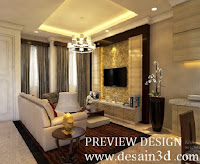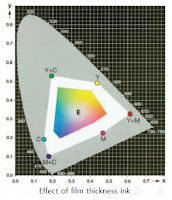Desainer interior berkualitas dan sudah berpengalaman mampu memberikan konsep terbaik dari beragam konsep desain interior, yang dirancang khusus untuk memenuhi kebutuhan dan keinginan Anda. Kami menyediakan layanan berbagai jasa desain interior untuk rumah, apartemen, cafe, kantor, ruko, rumah sakit, hotel dan lain lain.
Preview desain Ruang Tamu yang cantik menarik yang menjadikan ruangan Anda dapat berfungsi lebih optimal. Preview design ini dibuat sebagai acuan untuk pembuatan nantinya. Jadi harus direview dulu lebih detail apakah gambarnya sudah sesuai keinginan atau belum. Kalau sudah sesuai baru kita aplikasikan ke lahannya. Jika Anda tertarik dengan desain Ruang Tamu kami dan ingin dibuatkan juga, chat aja WA kami di 081916200296 dalam 1-3 hari kedepan anda sudah dapat melihat hasilnya. Kami Arusha Desain melayani jasa pembuatan desain model 3D Ruang Tamu dengan beragam konsep. Kami sudah puluhan tahun berkecimpung di jasa pembuatan desain 3d Ruang Tamu.
Bagi Anda yang tertarik dan ingin order desain, dijamin aman, nyaman dan cepat hasil designnya. Desain akan kita buatkan dulu dalam resolusi rendah berwatermark untuk dilihat hasilnya, setelah transfer biaya designnya akan kita kirimkan hasil resolusi tingginya untuk direview lebih detail. Kita memberikan 2x revisi gratis.Kami selalu berkomitmen dalam mendesain untuk memberikan yang tebaik dan sesuai dengan permintaan klien. Kami Siap Memberikan masukan dan bantuan permasalahan desain via online. Hasil rendering View 3d Ruang Tamu dengan kualitas HD photorealistik. Jangan lupa segera hubungi segera kami Arusha Desain yang akan membantu anda baik renovasi atau bikin desain baru untuk paket lengkap Ruang Tamu Anda. Dapatkan Desain 3D Ruang Tamu Mewah, Trendy, Unik dan Apik dari Arusha Desain. Konsep Desain yang Berkelas dengan harga design yang murah berkualitas. Cepat, Tepat dan tanpa uang muka. Lihat hasil baru bayar biaya desainnya.
Struktur Plastik Monomer Polimer Duromer
Struktur plastik
Bahan baku produk plastik adalah minyak mentah, gas alam dan batu bara sebagai pembawa karbon. Saat ini, minyak pirolisis dari pabrik daur ulang terkadang digunakan sebagai bahan awal.
Nama plastik adalah istilah kolektif untuk bahan makromolekul yang diproduksi secara sintetis atau dengan mengubah produk alami. Makromolekul ini terdiri dari individu, komponen molekul terkait kimia, yang disebut monomer.
Ketika monomer dirantai bersama, apa yang disebut polimer dibuat. Sebuah rantai polimer tunggal dapat dibentuk dari beberapa ribu monomer.
Plastik dapat terdiri dari molekul linier, bercabang atau ikatan silang. Makromolekul linier dan bercabang, yang, bagaimanapun, tidak terkait silang, dibuat bergerak oleh penerapan panas. Molekul dapat meluncur satu sama lain, yaitu bahannya dapat mengalir dan dapat ditempa. Inilah sebabnya mengapa bahan polimer ini disebut termoplastik. Semakin panjang rantai molekul dalam plastik, semakin tinggi sifat kekuatannya. Profil sifat termoplastik berkisar dari lunak hingga keras-keras atau rapuh keras.
Dalam kasus elastomer, makromolekul saling terkait secara lemah. Pada suhu kamar mereka berada dalam keadaan karet-elastis karena mobilitas rantainya yang tinggi.
Elastomer tidak dapat dicairkan dan tidak larut.
Plastik dengan rantai molekul jaringan yang kuat secara spasial dikenal sebagai duromer. Mereka berperilaku keras dan rapuh pada suhu kamar. Seperti elastomer, mereka tidak larut dan tidak dapat diserap.
Ada juga yang disebut elastomer termoplastik (TPE), yaitu plastik seperti karet yang dapat dilebur. Seperti termoplastik, mereka terdiri dari molekul benang. Dalam elastomer termoplastik, bagaimanapun, molekul benang memiliki segmen molekul individu yang begitu kuat tertarik satu sama lain sehingga mereka bertindak seperti jaringan.
NEW PRODUCT CREATION
The products produced by the company, in their journey, of course undergo stages as according to its life cycle, so that product selection, product definition and product designs need to be continuously updated. Therefore know how to create and develop new products successfully it is an obligation for companies that want to survive.
1. New Product Creation Opportunity
Circumstances that provide opportunities for the emergence of new products include:
1. Consumer Understanding
2. Economic Change
3. Sociological and demographic changes
4. Technological Change
5. Political/Regulatory Changes
6. Other changes such as:
a. Practice in the market
b. Professional standard
c. Supplier
d. Distributor
2. The Importance of New Products
Companies need to continuously make efforts to create new products or product renewal because to be able to balance the competition faced including substitute products as well as changes in consumer needs and desires. Even though in reality many new products fail to get it marketed but persistent efforts to introduce new products must still be done. Therefore, product selection, product definition and product design is very important to be carried out continuously so that the operations manager and
the organization must understand the risk of failure that may occur. And must accommodate many new products while the activities carried out are still carried out.
Product Development Stages
a. Ideas that can come from various sources from within the company, for example the Research section
and Development and from outside through understanding consumer behavior, competition,
technology, workers, supplies. This stage is the basis for entering the market and
usually follow the company's marketing strategy.
b. The ability of the company to realize the idea. By doing coordination of various related departments in the company concerned.
c. Consumer demand to win in competition by identifying position and product benefits that consumers want through attributes about the product.
d. Functional specifications: How can a product function? By going through identification of engineering characteristics of the product, possible comparison with the product from competitors.
e. Product specifications: How is the product made? Through physical specifications such as size,
dimensions.
f. Design review: Are the product specifications the best in meeting the requirements? consumer needs?
g. Market test: Does the product meet consumer expectations? To ensure prospects for future by selling in bulk.
h. Introduction in the market by mass-producing to be marketed.
i. Evaluation: to measure success or failure, because if you fail you can quickly
replaced by other, more profitable products.
Color Reproduction in Printing
Quality assurance in printing aims to
constant/fixed and correct/correct color reproduction/copying via
whole in the printing process. For printing ink and color
printing supplies, the most important parameter is film thickness
ink, halftone value, color balance, ink installation and
color series.
Ink film thickness
For technical reasons, the maximum ink film thickness is in
offset printing is about 3.5 m. For coated paper and
color process related to DIN 16 539 color location which
should be achieved/obtained with an ink film thickness between 0.7
and 1.1 m.
If lithography
it doesn't fit / doesn't
match, use
printing ink that is not
appropriate, however,
this could happen
that point of standardization
on the chromatic diagram
CIE not reached.
Color distance
reproduction also decreases
if the saturation is not
adequate.
In
white area picture
shows how narrow the color gap with the ink is
less in every three color processes.
In terms of physics, the effect of the thickness of the ink film on the
The view can be explained as follows.
Printing ink does not cover the paper; the ink is, somewhat, transparent.
Light enters/penetrates the ink.
In passing through ink, light
facing pigment that absorbs into wavelength
whichever is larger or smaller.
The higher the pigment concentration and the film thickness
The higher the ink/bigger, the more pigment is produced
incorporated by the incident light and, as a result, more is
absorbed.
In the end, the ray of light reaches the surface (white) on the
print and reflected supplies. On the way back to the light
has to go through the ink film again and only after that he can
captured/seen by the eye of the observer.
The thick printing ink film absorbs more light and
reflects less than the thin printing ink film; so that
observers see darker, more saturated colors, hues.
The part of the light that reaches the eye becomes suitable as
basis for estimating/grading each color.
















